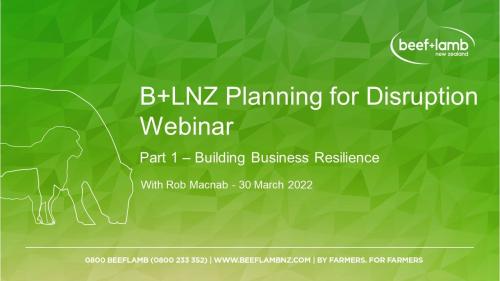Search results
Displaying 181 - 190 results of 923
- beef lamb new zealands prewritten submission template content farmers make submission governments agricultural emissions pricing proposals sheep beef farmer accept governments proposals pricing …
- NewsBeef + Lamb New Zealand (B+LNZ) acknowledges the announcement by Government regarding the RMA Amendment Bill to make urgent changes to the resource management system, particularly in relation to …

- News… of sheepmeat from New Zealand impacting their markets, however this is unlikely as we are …

- Industry data… trading hoggets point sector adjusting market policy signals even landuse change … improved farmgate prices both store prime markets historically high weaner cattle prices … purchasing weaner cattle record high prices markets some farmers would have purchased more …
- Page… consider discussion needs wider than marketbased biodiversity credit system … alternative option biodiversity credit market imperative conversation takes place … regulations 2004 under primary products marketing act 1953 its purpose lead confident …
- VideoThis section focuses on how you can build resilience and some key points and options to handle disruption. …
- Resource book1 beef cow body condition scoring reviewed december 2025 2 acknowledgements body condition scoring guide arose from beef cows 4 profit 20132014 beef lamb new zealand farmer initiated technology …
- Factsheet… sale lambs sold store weaning heaviest 30 marketed works from weaning through february … growth rates ewes maintain pasture quality marketed 11 15 months later works 300 320kgcw … situations never just one silver bullet market poor selling stock grazing off farm …
- Factsheet… recent trade agreement where condition market access compliance our paris agreement … reduced export revenue new zealand note irony market made manage externalities fossil fuel … manage impacts warming world along changing market expectations prices lnz believes forest …
- NewsThe GRSB was established to advance the continuous improvement in sustainability of the global beef value chain. B+LNZ, which will sit on the board for a two year-term from next year, was nominated …

